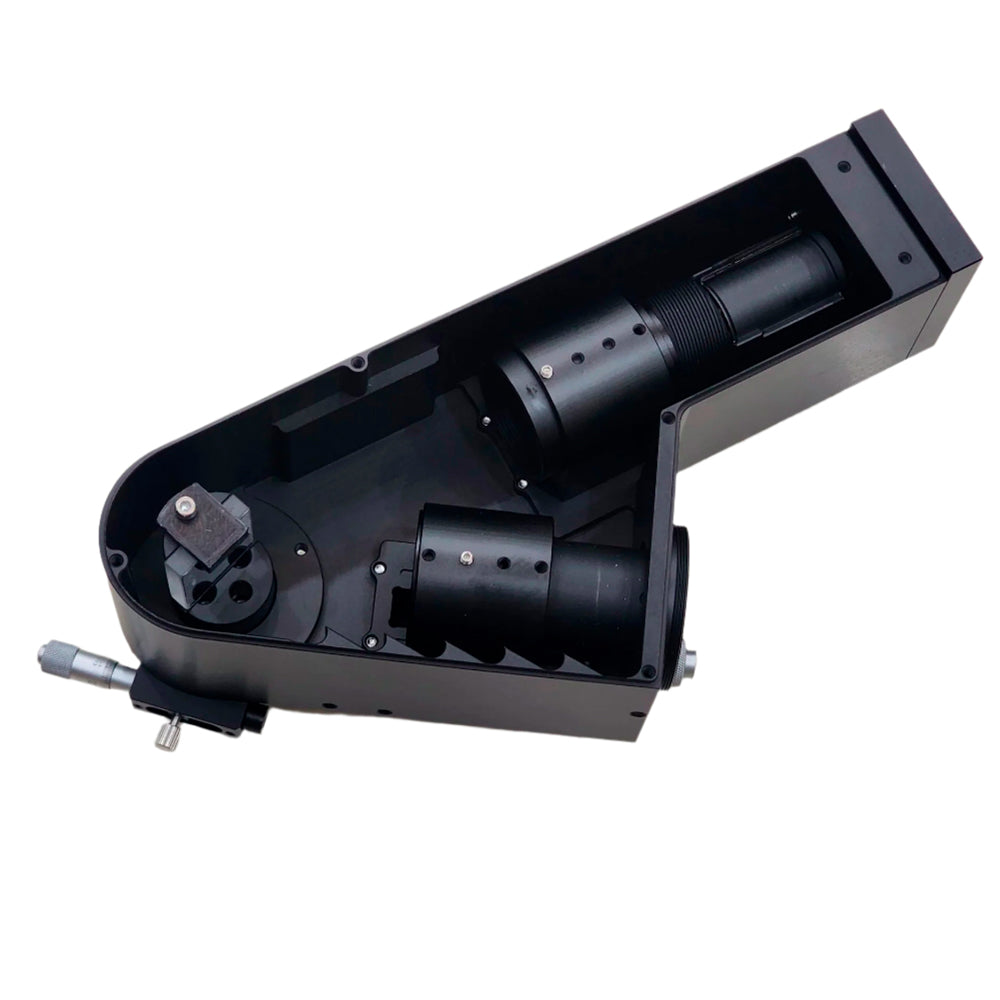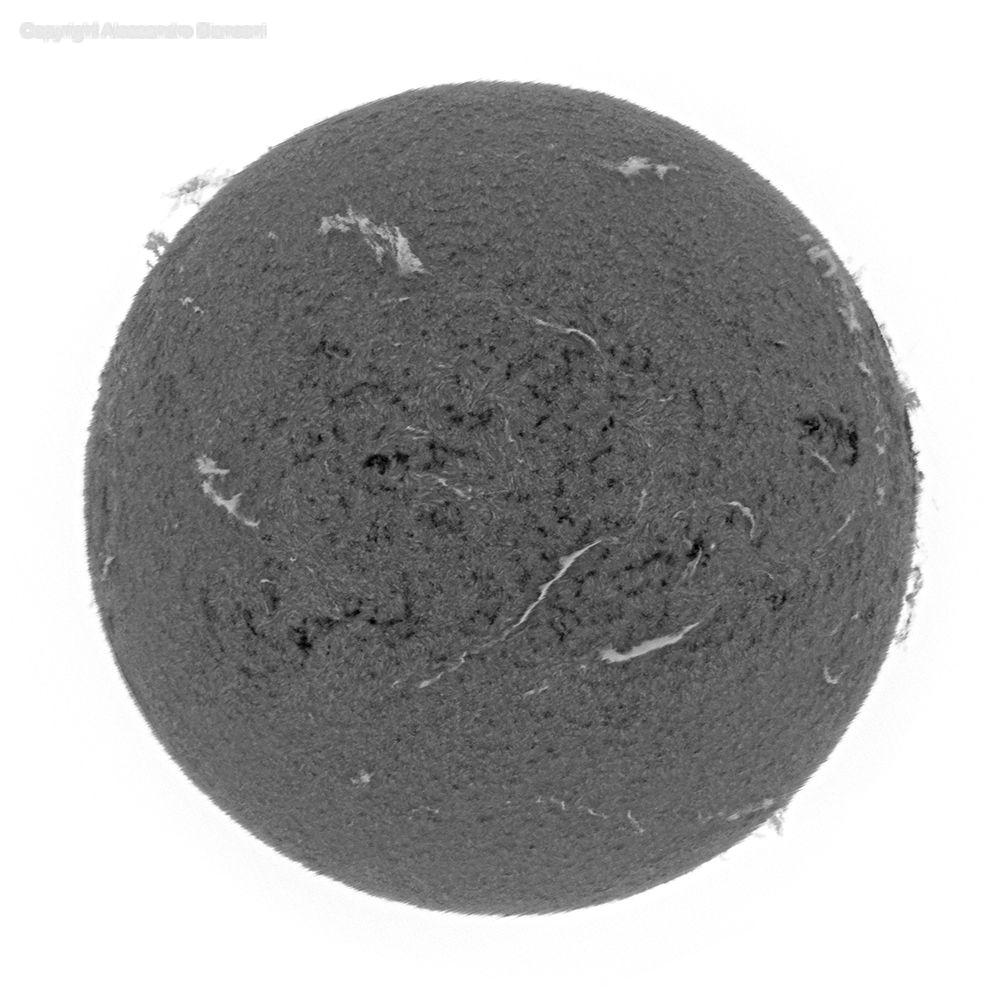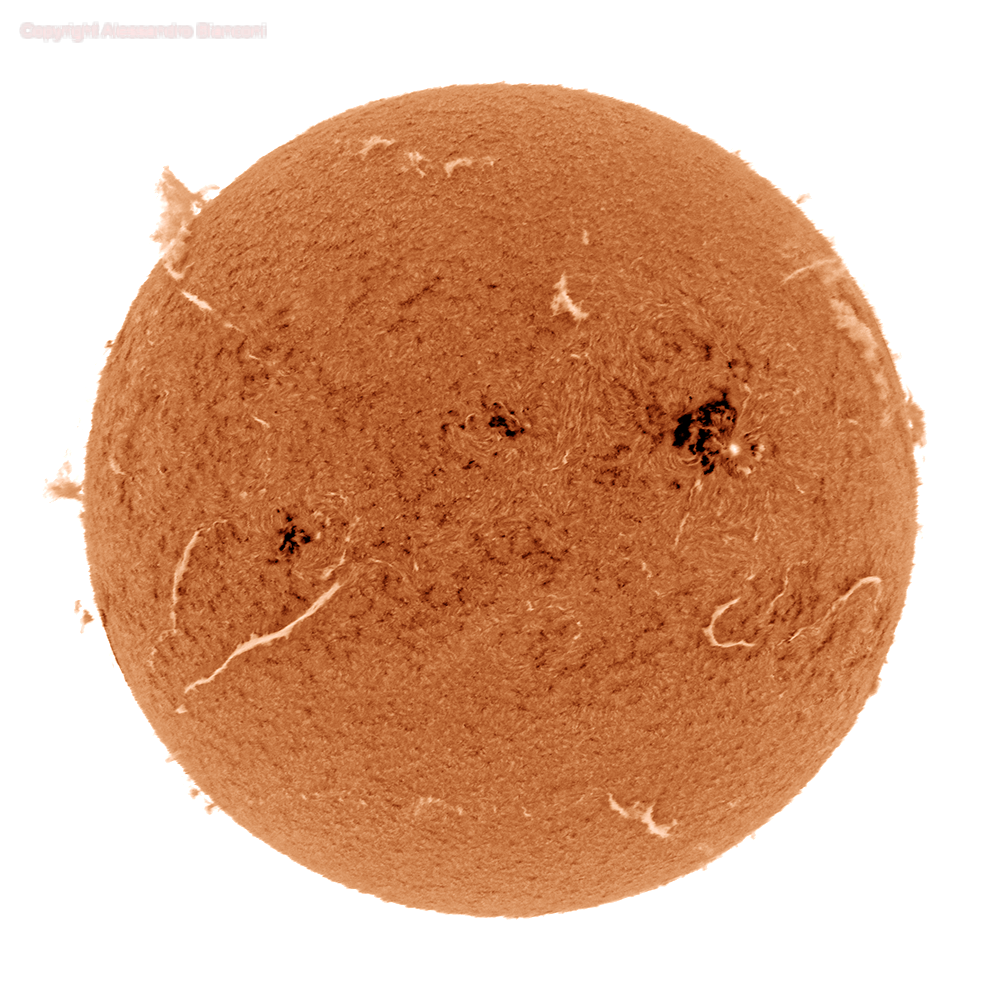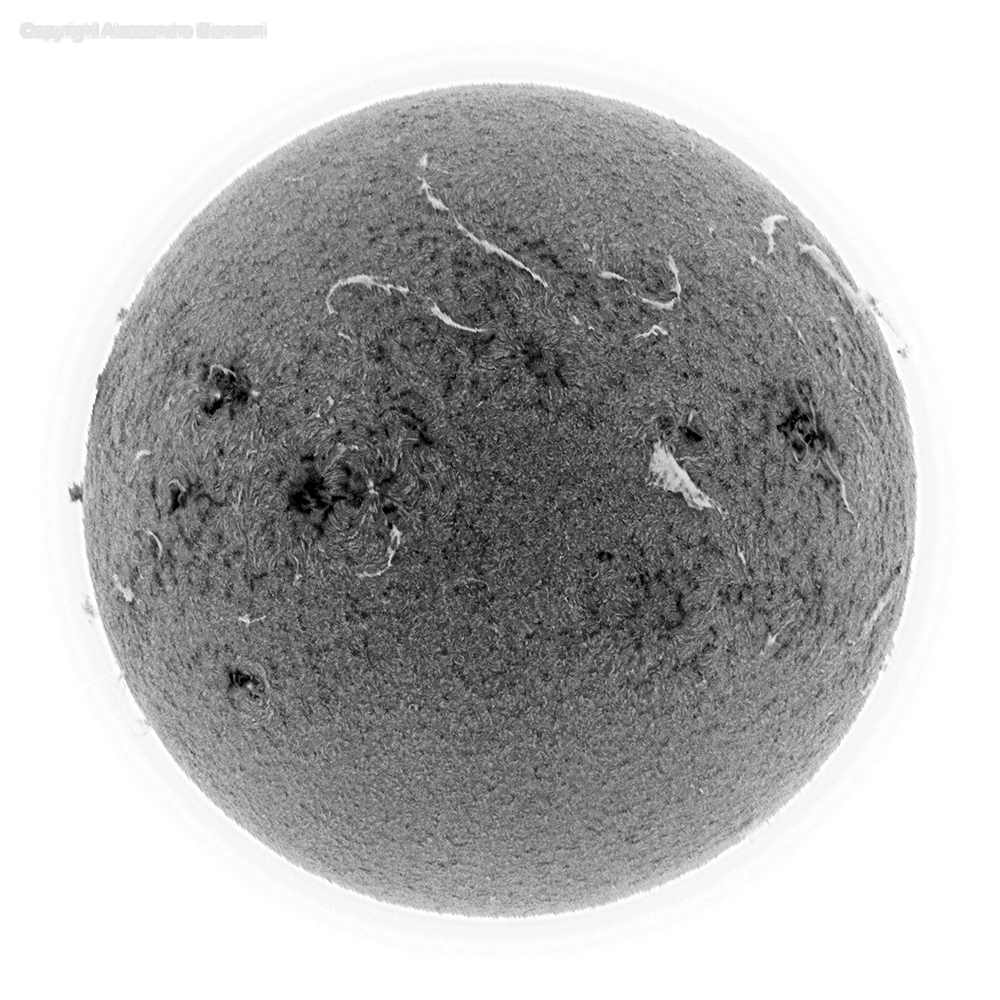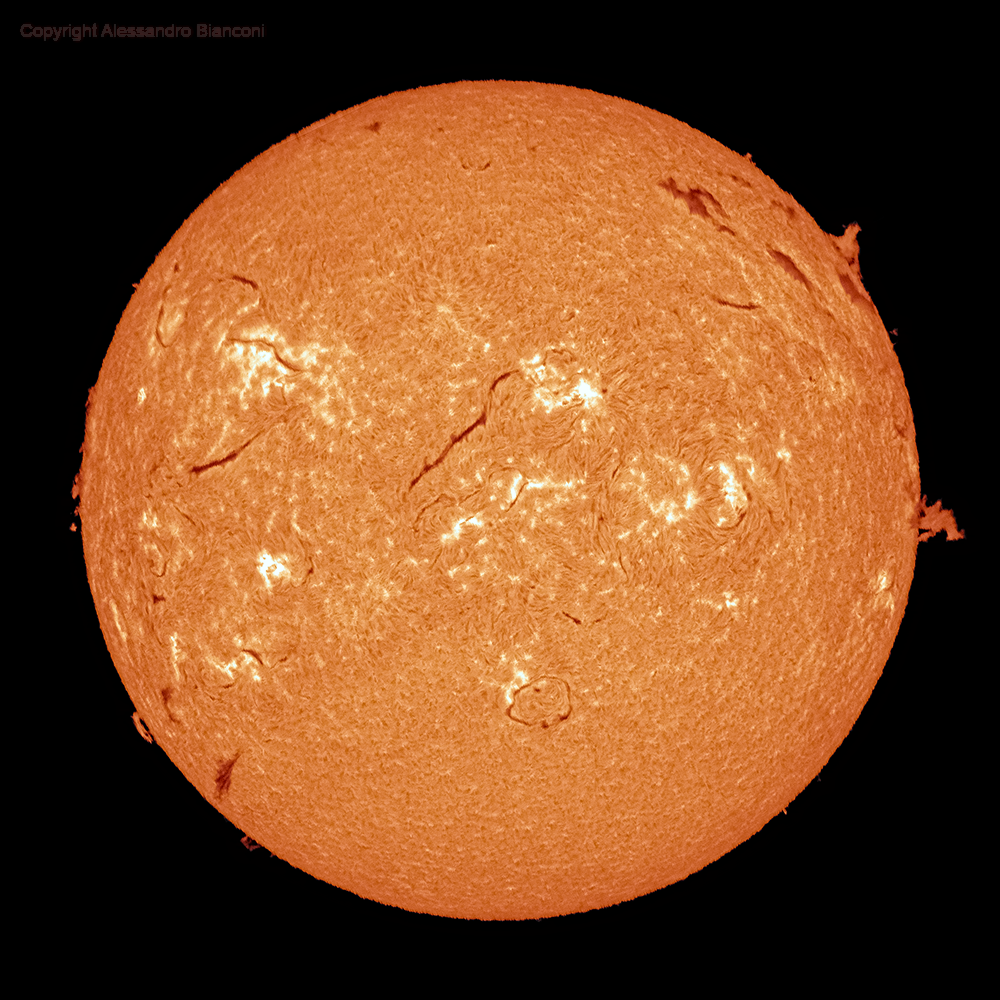MLASTRO SHG 700 SPECTROHELIOGRAPH
MLASTRO SHG 700 SPECTROHELIOGRAPH is a special order item. Contact us for more info.
The Spectroheliograph MLAstro SHG 700 is an affordable imaging device that allows the observation of the Sun in narrowbands with no need of multiple etalon filters for different wavelength. It uses a slit to capture a small portion of the sunlight that through a collimator is turned in parrallel rays. The rays are scattered into a spectrum after hitting a diffraction grating, then the beam is refocused by a lens onto a camera sensor. Simply adjusting the angle of the grating, it's possible to switch between different wavelengths, which allows you to observe the Sun in H-alpha, H-beta, Sodium D, Helium D3, Ca K or any part of the visible spectrum.
The SGH 700 does not require an ERF (Energy Rejection Filter) for aperture up to 102mm; for bigger diameters you MUST use an ERF or you will RISK TO DAMAGE THE TELESCOPE AND THE DEVICES CONNECTED.

Photo taken by Alessandro Bianconi
The SHG 700 extrapolate "slices" of light which are captured in video format while the mount is slewing, then a specialized software, like SharpCap, FireCapture, ASIcap or JSolex, use them to generates the final image of the Sun. The SHG 700 is NOT for visual use, it does not allow you to look at the Sun with your own eyes, because the the final image needs to be reconstructed by the software.
With an ultra-narrow bandpass of approximately 0.182 Å FWHM, the SHG 700 delivers super-high contrast images without any stray light. Unlike an etalon filter, the SGH 700 maintains uniform sharpness, detail and contrast in the entire field of view, which makes the spectroheliograph a perfect tool to capture images of the Sun full disk.
The SHG 700 can be used for different applications, like capture the Doppler Shift Data, which can be used to measure the plasma speed and then build a cosmic speedometer to determine if the plasma is moving towards Earth or away from it. Another way to use the SHG 700 is the observation of the Zeeman split in iron absorption lines, to detect the magnetic field in the atmosphere of the Sun.
Photos taken by Alessandro Bianconi
High Rigidity and Thermal Stability
The SHG 700 has an aluminium unibody designed in CNC-machined with selected 3D-printed components, that ensures incredible rigidity, durability, and thermal stability while remaining lightweight, with the entire setup weighing under 1 kg. Focus and collimation stay locked even during extended or remote imaging sessions.
High-Precision Optical Alignment
For the best image quality, the SHG 700 has been engineered for tight tolerances, ensuring a very accurate optical alignment with built-in adjustments, to fine-tune it when needed.
Micrometers for Fine Adjustments
Smooth lens focusing and grating control can be controlled with precision micrometers, eliminating the backlash and flexibility issues of traditional helical focusers. The micrometer for the camera lens ensures precise adjustments without compromising image stability.
The maximum focal length
Your camera needs a M42 x 0.75 female thread to be connected to the SHG 700. If your camera has a 1.25" barrel, you need a M42 female to 1.25" adapter like the Baader Click Lock M42.
To connect the SHG 700 to your telescope, you can use the enbeded M42 female thread. If your telescope has a 2" connection, you need a M42 male to 2" adapter like the Badder 2" Nosepiece M42 or the Prima Luce Lab M42 to 2".
The maximum focal length to capture the full disk of the Sun, using the SGH 700 is 700mm, longer focal lengths will magnify the image but, unless the seeing is exceptional, it will not improve the resolution significantly. For example: a focal length of 700mm combined with a camera with a pixel size of 3.76 µm (such as 533, 2600 the 6200 and many other astronomical cameras) produces a pixel scale of 1.11 "/pixel.
The sensor of the camera used for the capture should have the longer edge of the sensor over 7mm and a pixel size smaller than 3µm - 2µm for optimal results.
The SGH 700 offer better performances when used in combination with optics with f-ratio above f/7. It is possible to use faster telescope like f/4 or f/5 but a high quality optics will be required to obtain satisfactory results. The majority of the telescopes on the market are not optimized for near-UV observation, with the result of a strong spherical aberration in the blue spectrum, in particular near CaK and CaH; in this case, to obtain acceptable performances, an aperture mask can be used to reduce the front aperture, stopping down to about f/10 to f/15.
Specifications
|
Illuminated Circle |
16 mm |
|
Telescope Side Connection |
M42 x 0.75 female |
|
Camera Side Connection |
M42 x 0.75 male |
Included Items
This device includes:
|
|

